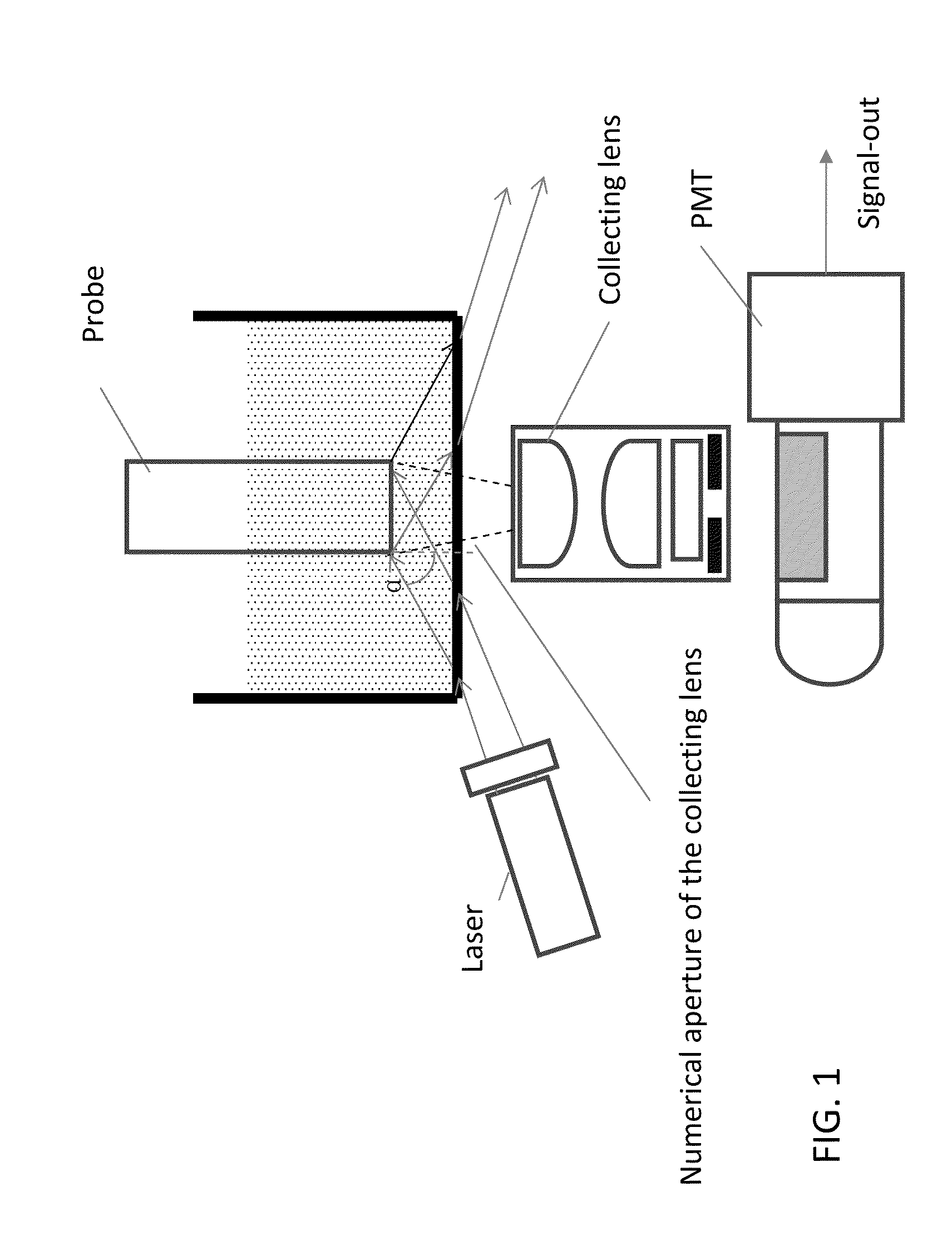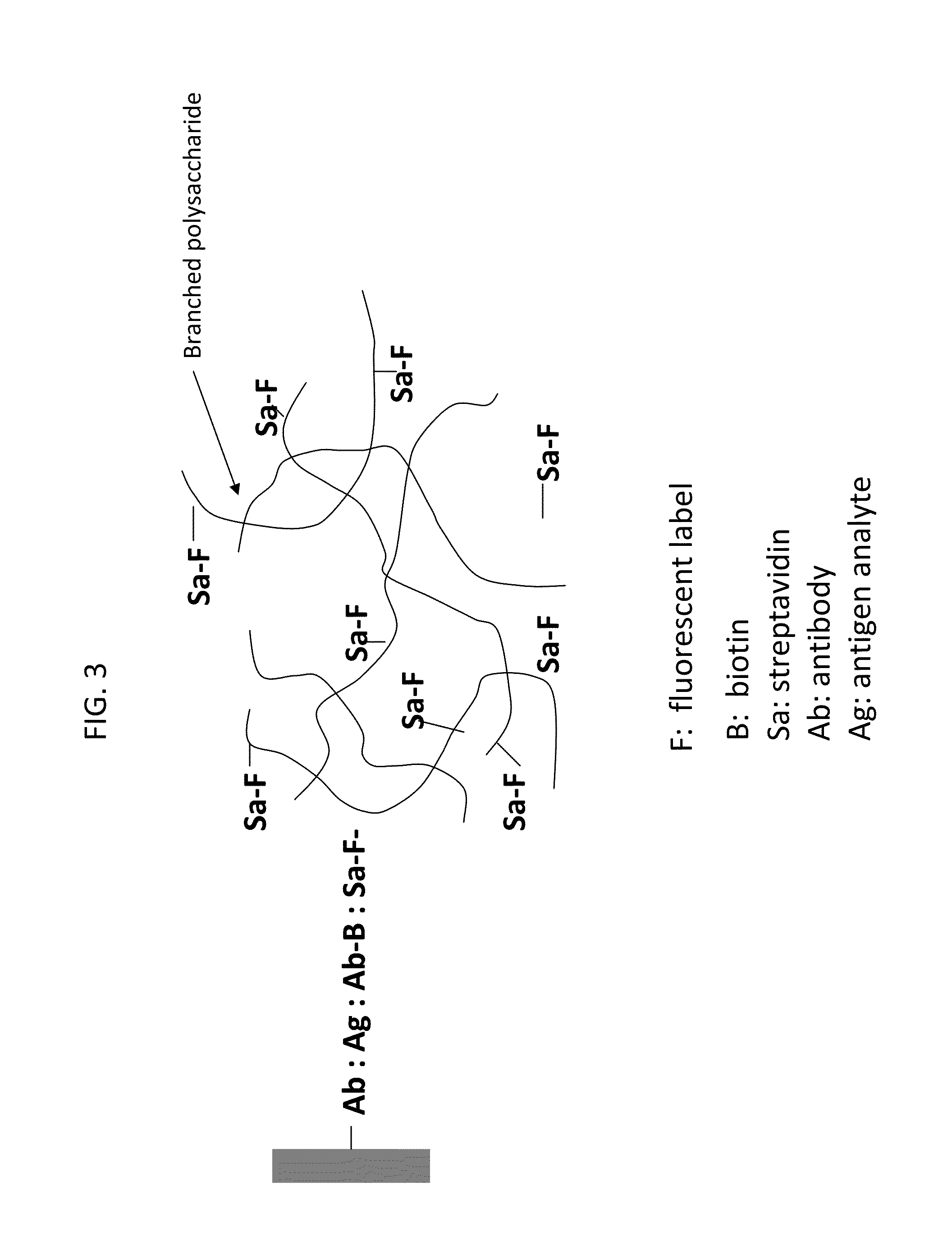Luminescent polymer cyclic amplification
- Summary
- Abstract
- Description
- Claims
- Application Information
AI Technical Summary
Benefits of technology
Problems solved by technology
Method used
Image
Examples
example 1
Preparation of Probe Having Immobilized First Antibody
[0068]Quartz probes, 1 mm diameter and 2 cm in length, were coated with aminopropylsilane using a chemical vapor deposition process (Yield Engineering Systems, 1224P) following manufacturer's protocol. The probe tip was then immersed in a solution of murine monoclonal anti-fluorescein (Biospacific), 10 μg / ml in PBS (phosphate-buffered saline) at pH 7.4. After allowing the antibody to adsorb to the probe for 20 minutes, the probe tip was washed in PBS.
[0069]Capture antibodies for troponin I (TnI) and brain naturetic peptide (BNP), obtained from HyTest, were labeled with fluorescein by standard methods. Typically, there were about 4 fluorescein substitutions per antibody. Anti-fluorescein coated probes were immersed in fluorescein labeled capture antibody solution, 5 μg / ml, for 5 minutes followed by washing in PBS.
example 2
Preparation of Crosslinked FICOLL® 400-SPDP
[0070]Crosslinked FICOLL® 400-SPDP (succinimydyl 6-[3-[2-pyridyldithio]-proprionamido]hexanoate, Invitrogen) was prepared according to Example 1 of US 2001 / 0312105. FIG. 5 shows a flow chart of its preparation.
example 3
Preparation of Cy5-Streptavidin
[0071]32 μL of Cy 5-NHS (GE Healthcare) at 5 mg / ml in DMF reacted with 1 ml of streptavidin (Scripps Labs) at 2.4 mg / ml in 0.1 M sodium carbonate buffer pH 9.5 for 40 minutes at 30° C. Applying the mixture to a PD 10 column (Pharmacia) removed unconjugated Cy 5. Spectral analysis indicated 2.8 Cy 5 linked per streptavidin molecule.
PUM
 Login to View More
Login to View More Abstract
Description
Claims
Application Information
 Login to View More
Login to View More - R&D Engineer
- R&D Manager
- IP Professional
- Industry Leading Data Capabilities
- Powerful AI technology
- Patent DNA Extraction
Browse by: Latest US Patents, China's latest patents, Technical Efficacy Thesaurus, Application Domain, Technology Topic, Popular Technical Reports.
© 2024 PatSnap. All rights reserved.Legal|Privacy policy|Modern Slavery Act Transparency Statement|Sitemap|About US| Contact US: help@patsnap.com










